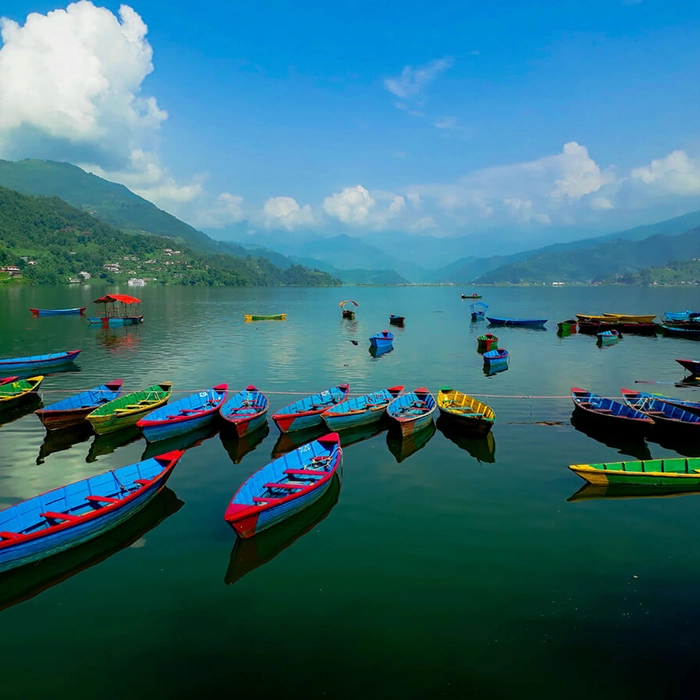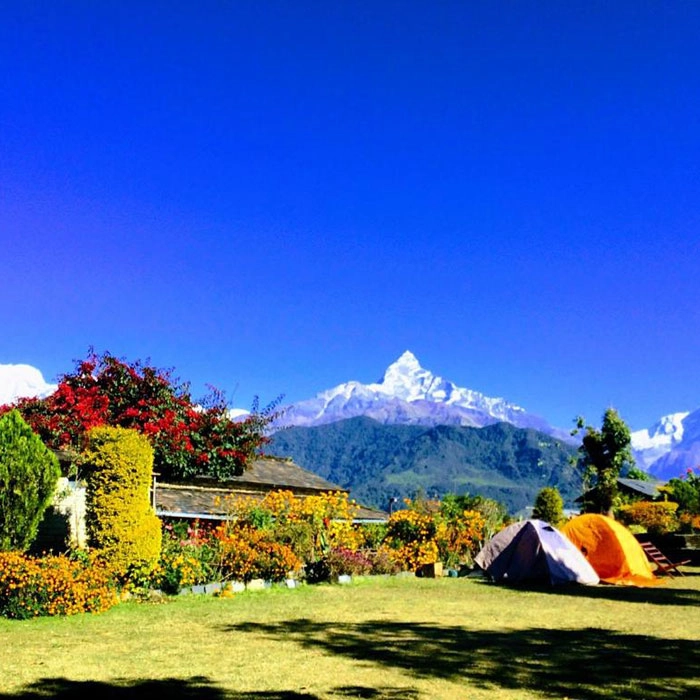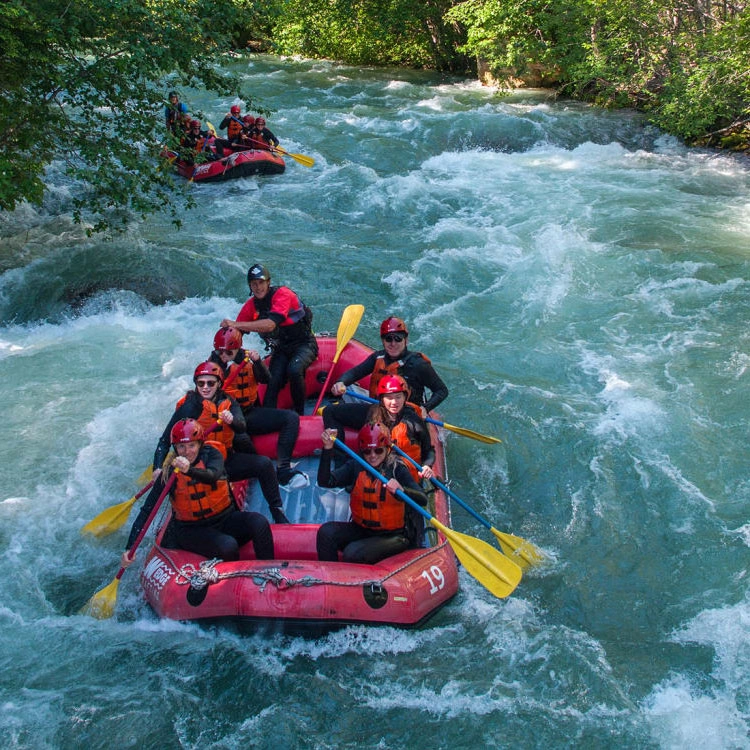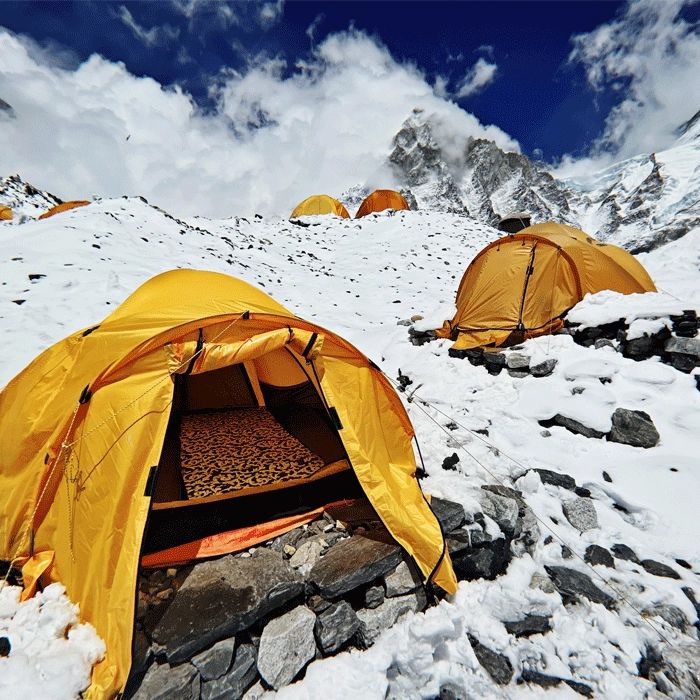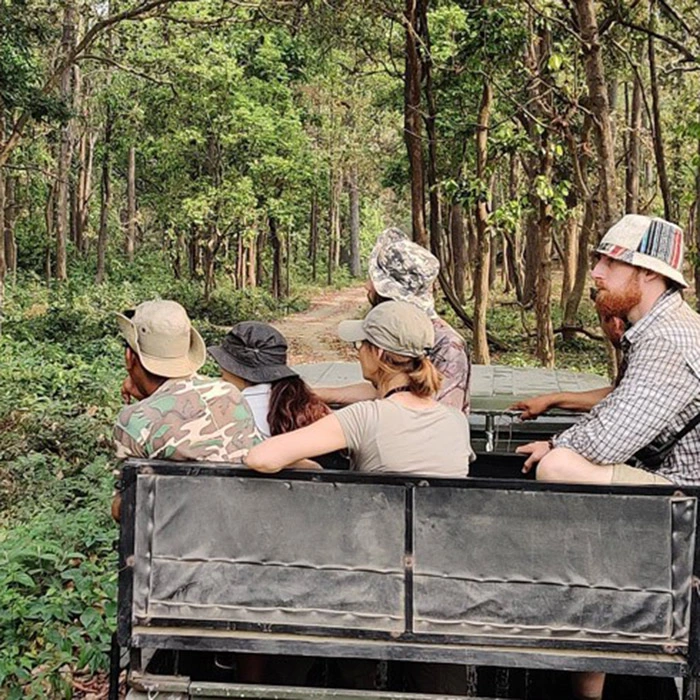DHAMPUS PEAK EXPEDITION
US$4,795.00
/pp
-
21 Days
-
Dhaulagiri
-
Spring/Autumn
-
Trek & Climb
-
6,012 Meters
-
Strenuous
-
Car / Plane
-
02-16 People
-
JH#282
 Overviews
Overviews
Embark on Dhampus Peak Expedition in Nepal, a thrilling quest to the 6,012 meters summit of Dhampus Peak in the breathtaking Dhaulagiri Range. This exhilarating expedition follows the renowned Dhaulagiri Circuit Trek trails, offering a unique opportunity to conquer one of Nepal’s most remote and awe-inspiring peaks. The adventure starts with scenic approaches and essential acclimatization treks. These preparations are crucial for a successful climb. You will traverse the iconic Dhaulagiri Circuit Trek, which includes lush forests, serene rivers, and rugged, snow-capped ridges. These trails help you acclimatize gradually, making your ascent more manageable and enjoyable. Next, from Dhampus Pass, you’ll ascend to the Dhampus Peak Base Camp. This camp is strategically located to offer stunning panoramic views of the Dhaulagiri massif and surrounding Himalayan peaks. Here, you can rest and marvel at the majestic mountain scenery before the final push to the summit. The climb to the summit is challenging yet rewarding. Climbers experience the thrill of reaching one of Nepal’s highest points. After reaching the summit, you will retrace your steps back to Pokhara. This return journey allows you to relive the diverse landscapes and breathtaking beauty of the Himalayas. Our expert guides ensure your safety and comfort throughout the journey, making the climbing experience seamless and memorable. Dhampus Peak Expedition is perfect for seasoned climbers and adventurous souls. It combines a challenging ascent with the serene beauty of Nepal’s high mountains. This climb offers not only a remarkable summit achievement but also an immersive experience in one of the most stunning and less-traveled regions of the Himalayas.
 Itinerary (Plan)
Itinerary (Plan)
Arrive in Kathmandu (1,400 m / 4,593 feet), Nepal's vibrant capital, where you'll be warmly welcomed with marigold garlands. After transferring to your hotel, take time to relax and acclimate to the bustling city. Discover vibrant local markets, indulge in traditional Nepali dishes, and delve into Kathmandu's rich cultural tapestry. This initial day is perfect for easing into your journey, setting the stage for the exciting adventures ahead in Eastern Nepal. A representative from Jagadamba Holidays will ensure a smooth and pleasant arrival.
Optional Evening Activity:
If you wish, you can spend your evening experiencing the Pashupatinath Aarti, a captivating religious ceremony held at the Pashupatinath Temple. The Aarti usually begins around 6:00 PM and lasts for approximately an hour. This ceremony is a mesmerizing display of traditional music and rituals, providing a profound insight into Hindu spiritual practices. Please check the exact time for the Aarti on the day of your visit, as it may vary. This option is not included in the standard itinerary but offers a unique opportunity to immerse yourself in local culture.
Your journey begins with a scenic drive to Pokhara (822 m / 2,697 ft.), a picturesque city nestled beside the serene Phewa Lake. The drive typically takes around 6-7 hours, covering approximately 200 kilometers from Kathmandu. For a more time-efficient and scenic travel experience, consider opting for a short 30-minute flight from Kathmandu to Pokhara instead of the 6-7 hour drive. This premium option, available at an additional cost, offers a breathtaking aerial view of the Himalayan landscape, ensuring a more comfortable and memorable journey.
As you leave the bustling capital, the road winds through lush green hills, terraced farmlands, and charming villages, offering a glimpse of rural Nepalese life. Enjoy the tranquil atmosphere of Pokhara, with the majestic Annapurna range standing tall in the backdrop. This city is the gateway to your trekking adventure, so take time to relax and prepare for the thrilling days ahead.
Begin your journey with a scenic drive from Pokhara to Darbang, where lush landscapes and traditional villages greet you. The trek to Dharapani offers a gradual ascent through terraced fields and dense forests, providing glimpses of local life and culture. As you reach Dharapani, you'll be rewarded with stunning views of the surrounding hills and a serene environment perfect for acclimatization. Drive from Pokhara to Darbang (1,100 m) and Trek to Dharapani (1,550 m)
Embark on a picturesque trek from Dharapani to Sibang, traversing through verdant valleys and terraced farmlands. The trail takes you past charming villages, where you can witness the daily life of the local communities. As you ascend to Sibang, the landscape transforms into a mix of lush greenery and rugged terrain, offering breathtaking views of the distant peaks and a tranquil atmosphere. Trek from Dharapani to Sibang (1,770 m)
Descend from Sibang to Naura, where the trail meanders through terraced fields, rhododendron forests, and quaint villages. This leg of the journey provides ample opportunities to interact with locals and experience the region's rich cultural heritage. As you approach Naura, the path opens up to expansive views of the surrounding valleys, making it a perfect spot to relax and enjoy the tranquility of the area. Trek from Sibang to Naura (1,450 m)
Climb from Naura to Lapche Kharka, a high-altitude grazing area surrounded by panoramic mountain views. The trek involves navigating through dense forests, crossing small streams, and ascending steep ridges. Along the way, you'll encounter diverse flora and fauna, making this section a delight for nature enthusiasts. Upon reaching Lapche Kharka, you'll be rewarded with a peaceful campsite amidst stunning natural beauty. Trek from Naura to Lapche Kharka (2,100 m)
Ascend from Lapche Kharka to Sallaghari, traversing through rugged landscapes and dense pine forests. The trail offers awe-inspiring views of snow-capped peaks and deep valleys, providing a true Himalayan trekking experience. As you reach Sallaghari, you'll find yourself in a serene and secluded environment, perfect for relaxation and acclimatization before heading to higher altitudes. Journey Through Alpine Meadows to the Tranquil Forests of Sallaghari (2,800 m)
Journey from Sallaghari to Italian Base Camp, a challenging but rewarding trek that takes you deeper into the heart of the Dhaulagiri region. The trail is marked by steep ascents, rocky terrain, and breathtaking views of the Dhaulagiri massif. Upon reaching Italian Base Camp, you'll be surrounded by towering peaks and glaciers, creating a truly awe-inspiring setting for your campsite. Trek from Sallaghari to Italian Base Camp (3,660 m)
Enjoy a well-earned rest day at Italian Base Camp, where you can acclimatize and delve into the surrounding natural wonders. Enjoy short hikes to nearby viewpoints, offering panoramic vistas of the Dhaulagiri range. Engage in daytime adventures like glacier exploration or simply relax and take in the serene mountain environment. This day is crucial for adjusting to the altitude and preparing for the higher elevations ahead.
Hike from Italian Base Camp to Japanese Base Camp, ascending further into the alpine zone. The trail is steep and challenging, but the rewards are immense, with close-up views of the Dhaulagiri peaks and the surrounding glaciers. As you approach Japanese Base Camp, the landscape becomes more rugged and barren, providing a stark contrast to the lush valleys below. This high-altitude camp is the perfect spot to rest before your final push to Dhaulagiri Base Camp. Trek from Italian Base Camp to Japanese Base Camp (4,150 m)
Trek from Japanese Base Camp to Dhaulagiri Base Camp, navigating through glacial moraines and rocky trails. This challenging section of the trek brings you to the foot of the majestic Dhaulagiri peaks, offering breathtaking views of the surrounding glaciers and icefalls. Reaching Dhaulagiri Base Camp is an exhilarating triumph, where the towering presence of one of the world’s highest peaks casts a dramatic shadow. Standing at this breathtaking vantage point, you’re enveloped by the raw grandeur of the Himalayas. The sheer scale and beauty of Dhaulagiri evoke a profound sense of accomplishment, making every step of your journey worth it. Trek from Japanese Base Camp to Dhaulagiri Base Camp (4,700 m)
Spend a rest day at Dhaulagiri Base Camp, allowing your body to acclimate to the high altitude. Take advantage of this time to explore the area, with options for short hikes to nearby viewpoints or simply soaking in the majestic scenery. This day of rest and relaxation is vital for ensuring you're well-prepared for the upcoming high-altitude passes and the final stages of the trek. Italian Base Camp to Japanese Base Camp Trek With Panoramic Himalayan Vistas
Embark on the exhilarating trek across French Pass, the highest point of your journey at 5,370 meters. The ascent is steep and challenging, but the panoramic views from the pass are truly unforgettable. Descend into the remote Hidden Valley, a secluded area surrounded by towering peaks. The stark beauty and tranquility of Hidden Valley offer a unique and serene experience in the heart of the Himalayas. Trek Across French Pass (5,370 m) to Reach Hidden Valley (5,140 m)
Experience the awe-inspiring beauty of the Himalayas as you trek across Dhampus Pass, standing at an elevation of 5,244 meters, en route to the Dhampus High Camp at 5,400 meters. The adventure begins with a breathtaking sunrise, casting golden hues over the snow-capped peaks and marking a memorable start to your day. As you embark on this leg of your journey, the trail will lead you through rugged alpine terrain, characterized by its stunning vistas and serene landscapes. Dhampus Pass itself is a highlight, offering panoramic views of the surrounding Himalayan giants. This pass serves not only as a key waypoint but also as an excellent camping spot, providing a tranquil environment to soak in the majestic mountain scenery. After crossing Dhampus Pass, the trek continues with a gradual ascent to the Dhampus High Camp.
This high-altitude camp is strategically positioned to offer unparalleled views and to facilitate crucial preparations for the summit climb. The camp’s elevation allows you to acclimate further and get ready for the final push to Dhampus Peak. The journey to Dhampus High Camp is designed to ensure optimal acclimatization and readiness for the challenging ascent ahead. At Dhampus High Camp, you will prepare for the upcoming summit attempt. Enjoy the pristine mountain air, stunning vistas, and the peaceful solitude of this high-altitude haven. The camp provides an ideal base to finalize your climbing gear and mentally prepare for the culmination of your climbing expedition. Overnight at Dhampus High Camp in a comfortable tented setup ensures you are well-rested and ready for the exciting summit bid. This segment of the trek not only prepares you physically but also offers a profound connection with the majestic Himalayan landscape.Trek Across Dhampus Pass (5,244 m) to Reach Dhampus High Camp (5,400m)
Today is the highlight of your Dhampus Peak Climbing adventure, as you reach the summit of Dhampus Peak at an impressive elevation of 6,012 meters. The ascent to the summit is a challenging and technical climb, requiring careful navigation of steep, icy slopes and precise use of climbing equipment. Our expert guides will lead you through this demanding terrain, ensuring your safety and providing essential support throughout the climb. The climb begins early in the morning, allowing you to take full advantage of the optimal climbing conditions and to witness the stunning sunrise over the Himalayan peaks. As you ascend, the views become increasingly spectacular, culminating in breathtaking panoramas from the summit. From Dhampus Peak, you will enjoy uninterrupted views of the Annapurna and Dhaulagiri ranges, including the majestic Nilgiri, Tilicho Peak, and Tukuche Peak. The sight of these towering peaks, bathed in the golden light of dawn, will be a reward for your effort and determination. After celebrating your successful ascent, you will begin your descent towards Alu Bari, situated at 3,900 meters. The descent involves carefully retracing your steps back down the icy slopes and rugged terrain. This journey back to Alu Bari provides an opportunity to reflect on your achievement and take in the changing landscapes of the lower valley. Alu Bari, with its picturesque setting and serene environment, offers a comfortable campsite where you can unwind and relax. Enjoy the peaceful surroundings and the well-deserved rest after your triumphant climb. The evening at Alu Bari allows you to celebrate your summit success with your team and prepare for the next stages of your journey. Overnight stay at a tented camp in Alu Bari ensures a restful end to a momentous day. Here, you can savor the tranquility of the Himalayas and rejuvenate for the final leg of your adventure. This day marks the successful culmination of your climb and sets the stage for a safe and scenic return journey. Summit Dhampus Peak (6,012 m) and Descend to Alu Bari (3,900 m)
Descend from Alu Bari to the charming village of Marpha, known for its apple orchards and traditional Thakali culture. The trail winds through diverse landscapes, including lush forests and terraced fields, with the views becoming more expansive as you approach the Kali Gandaki Valley. Marpha’s cobbled streets, whitewashed houses, and peaceful ambiance offer a stark contrast to the rugged mountain terrain, providing a perfect place to rest and explore local traditions.Trek from Alu Bari to Marpha (2,660 m)
Embark on your journey from Marpha to Jomsom, meandering past the serene and picturesque Dhumba Lake. The journey is relatively easy, with a gradual ascent through the Kali Gandaki Valley. Dhumba Lake, with its clear turquoise waters, is a perfect spot for a short break and photography. Continue to Jomsom, the administrative center of the Mustang district, known for its stunning views of Nilgiri and the surrounding peaks. Jomsom’s modern amenities offer a comfortable rest before your flight. Trek from Marpha to Jomsom (2,743 m) via Dhumba Lake
Scenic Mountain Flight from Jomsom to Pokhara
Begin Day 13 with a breathtaking flight from Jomsom (2,743 m / 9,000 ft) to Pokhara (822 m / 2,697 ft), a highlight of any Nepal trekking itinerary. This short domestic flight offers spectacular aerial views of the Annapurna Himalayan range and the transition from the rugged Kali Gandaki Valley to the lush, tranquil Pokhara Valley—Nepal’s premier lakeside city and trekking hub.
Discover Pokhara’s Natural and Cultural Gems
Upon arrival, spend a leisurely day exploring Pokhara’s top attractions. Visit the serene Phewa Lake with its famous Barahi Temple, the panoramic World Peace Pagoda overlooking the valley, and the majestic Davis Falls. Don’t miss Gupteshwor Cave’s sacred interior or the dramatic Seti River Gorge. Whether you prefer a peaceful boat ride or browsing vibrant local markets and cafés, Pokhara offers an unforgettable cultural and natural experience.
Relax and Recharge in Nepal’s Lakeside Paradise
After days of trekking, enjoy a well-earned rest in Pokhara’s calm and scenic environment. Savor authentic Nepali cuisine at lakeside restaurants, reflect on your Annapurna trekking adventure, or simply unwind by the water’s edge. This leisure day perfectly balances relaxation and exploration, preparing you for your onward journey through Nepal. Important Note:
In case the flight from Jomsom to Pokhara is canceled due to weather conditions, we will arrange an immediate transfer by 4WD jeep. The journey takes approximately 6 to 7 hours on a smooth road. Please note that with this option, there won’t be time to explore Pokhara city and its surroundings. If you wish to have more leisure time in Pokhara, you can opt to pay extra for a flight from Pokhara to Kathmandu the following day and enjoy a full day in the lakeside city.
Your adventure concludes with a luxurious and scenic drive from Pokhara to Kathmandu on a deluxe tourist bus. Covering approximately 200 kilometers in 6–7 hours, this comfortable journey takes you through verdant hills, winding roads, and alongside the Trishuli River, offering stunning views of Nepal’s diverse landscapes. As you depart from the lake city of Pokhara, the gateway to the Annapurna region, you’ll pass through traditional Nepali villages, terraced fields, and lush valleys before arriving in Kathmandu, the bustling temple city rich in history, culture, and heritage. This final leg of your Dhampus Peak Expedition is not just a return trip but a last chance to embrace Nepal’s natural beauty and cultural essence. Upon reaching Kathmandu, spend your time exploring UNESCO World Heritage Sites, shopping for handmade souvenirs, or simply relaxing and reflecting on your unforgettable Himalayan trekking adventure.
Enjoy a free day in Kathmandu to relax and explore at your own pace. Visit top attractions like Bhaktapur Durbar Square, Boudhanath Stupa, and Pashupatinath Temple. Experience local culture, shop for souvenirs, and savor Nepali cuisine before your departure.
Depart from Nepal, concluding your unforgettable journey. Reflect on the stunning landscapes and rich cultural experiences you’ve encountered. Gear up for your next adventure, all while treasuring the unforgettable memories of your Himalayan trek. A representative from Jagadamba Holidays will pick you up from your hotel 3.5 hours before your actual flight time to ensure a smooth transfer to the airport.
Quotation 2025
| Group Size (Pax) |
2 - 2 |
3 - 4 |
5 - 6 |
7 - 8 |
9 - 12 |
13 - 16 |
17 - 20 |
21 - 24 |
25 - 32 |
| Cost Per Person |
$0 |
$0 |
$0 |
$0 |
$0 |
$0 |
$0 |
$0 |
$0 |
 Cost Include
Cost Include
- All transfers within Nepal are included as per itinerary
- Any domestic flight of Nepal as per trekking itinerary
- Trekking accommodation (hotel, lodge and/or tent) as per itinerary
- Small shared room with shared bathroom during trek in Nepal
- In Kathmandu and/or Pokhara: Stay at ***Hotel with breakfast
- Luggage for porters during the trek (12.5 kg/person)
- 3 meals (Breakfast, Lunch and Dinner) during the trek
- Unlimited tea or coffee for breakfast during the trek
- An English speaking guide (trekking/tour) as per Itinerary
- Travel insurance for trekking staff (guides and porters)
- All expenses of trekking staff(s) during trekking
- Includes all conservation, national park, trekking, and climbing permits
- Sightseeing / Wildlife tours if included in the itinerary
- Farewell dinner in Kathmandu before returning home
 Cost Exclude
Cost Exclude
- Single room/single tent surcharge (on request)
- Round trip/one way international flight ticket to Nepal.
- Tourist visa for Nepal (30-50 $, depending on length of stay)
- Personal Insurance (covers: Trip/flight cancellation, helicopter rescue)
- Meals (lunch, dinner) at hotels in Kathmandu, Pokhara and other cities
- Drinks (soft, hot or mineral/boiled water) during the lodge trek
- Any personal trekking and/climbing equipment for trekking in Nepal
- Hotel expenses in case of early return from trekking for any reason
- Costs due to flight cancellations & extra porters/horses during the trek
- Additional costs incurred due to any reason beyond Jagdamba’s control
- More evidence about pandemics like COVID-19 if needed in the future.
- Personal expenses during the trek (phone, wifi, shower, charging etc.)
- Other costs and things that are not mentioned in the service inclusion
- Gratuity for trekking staff (recommended: 9€ /10$ per traveler per day)
|







 Overviews
Overviews
 Trip Overview
Trip Overview
 Travel Itinerary
Travel Itinerary
 Cost Include
Cost Include
 Cost Exclude
Cost Exclude
 Fixed Departure
Fixed Departure
 Route Map
Route Map

 Freqeuntly Asked Questions
Freqeuntly Asked Questions
 Reviews And Rating
Reviews And Rating
